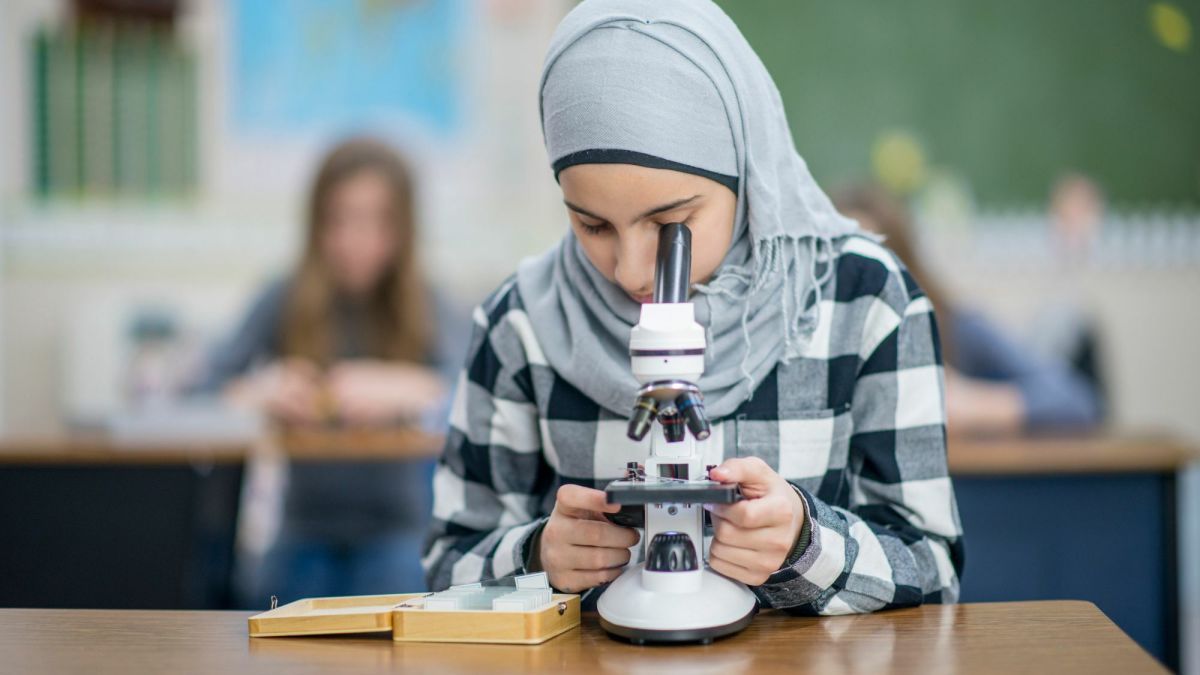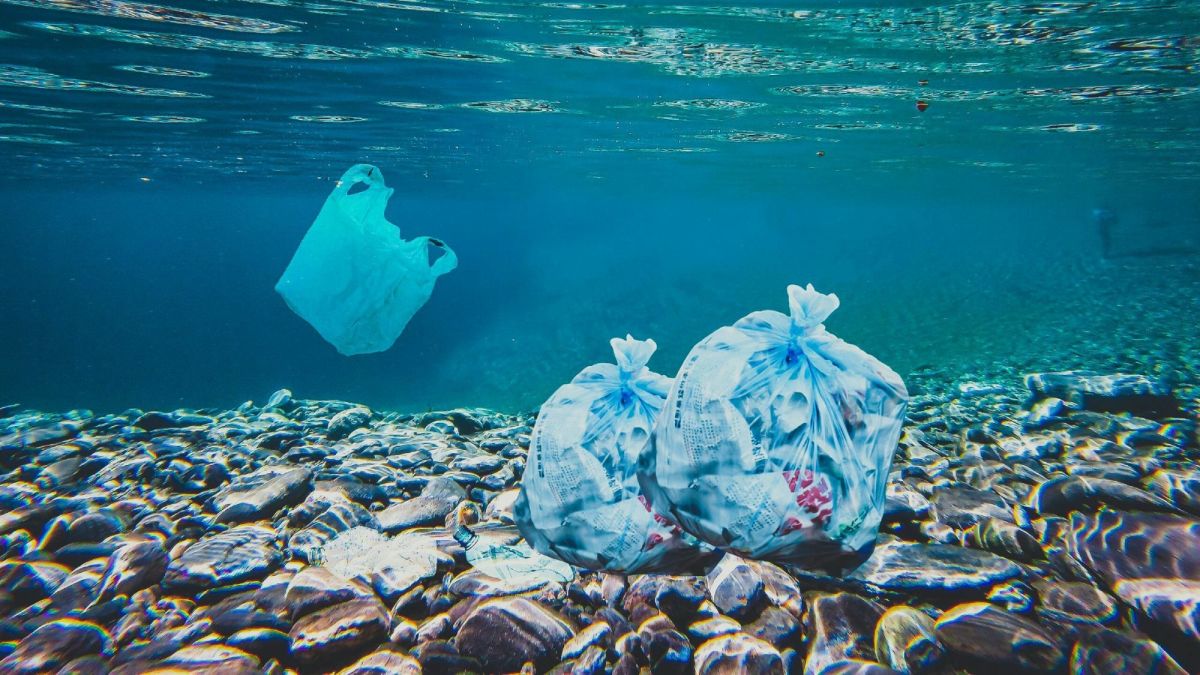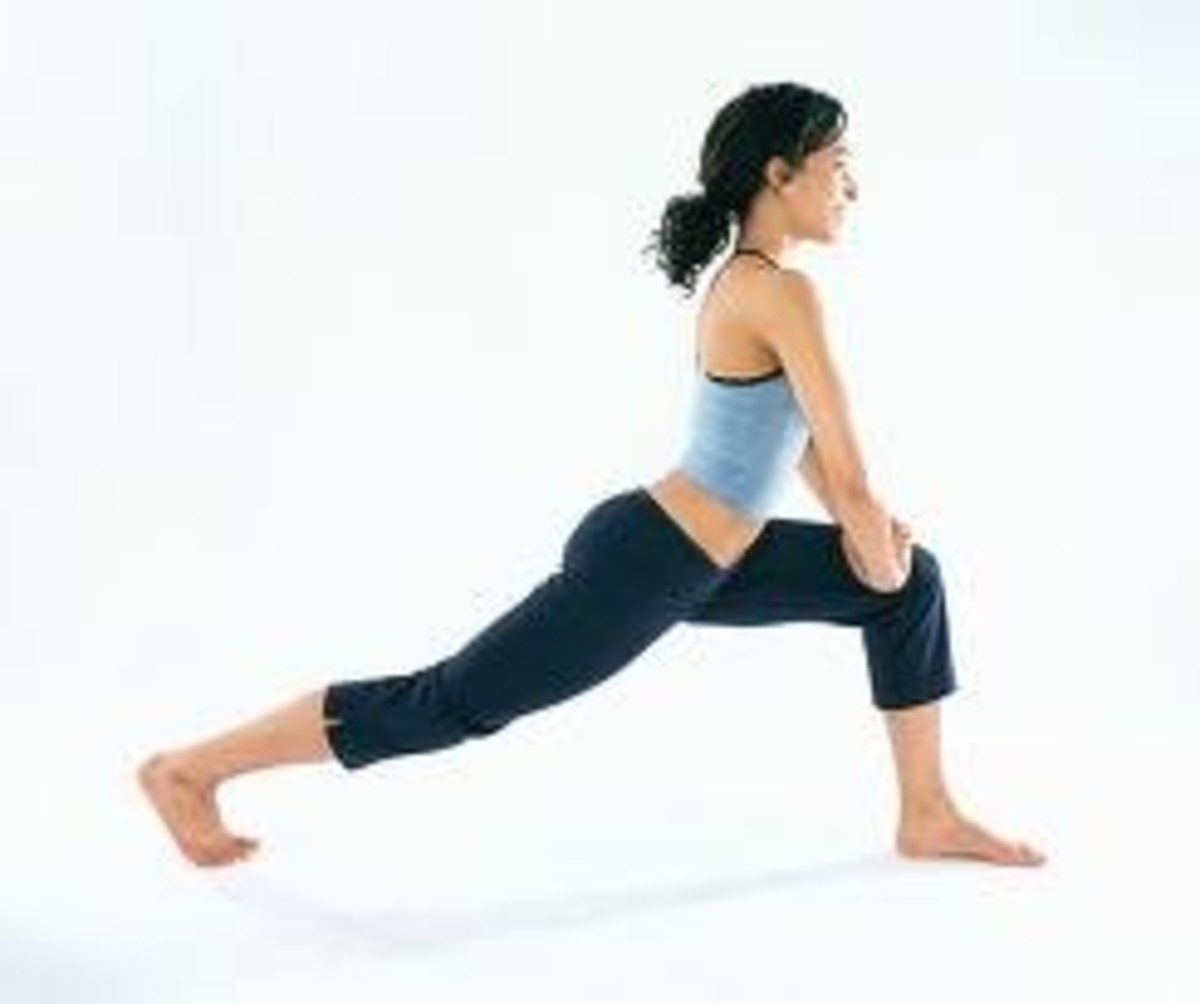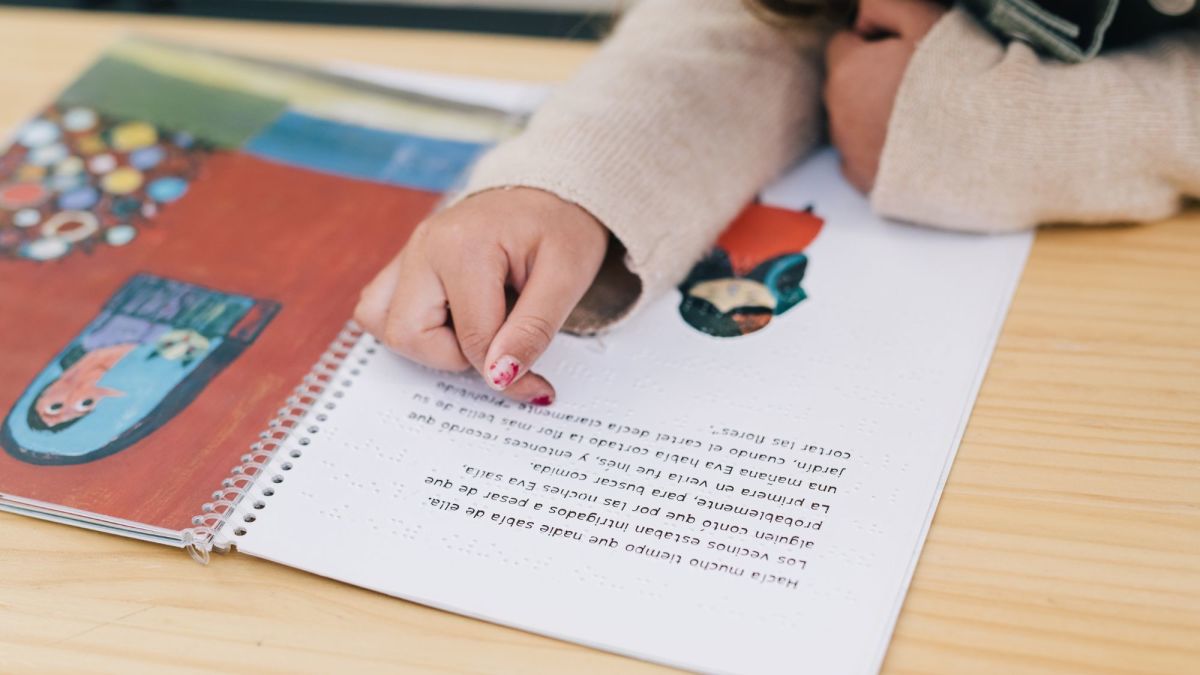Science Activities to do with Kids
Science Activities are Fun
Being a scientist myself, I wanted to share the wonder and excitement of science with my children. I wanted them to appreciate the promise and usefulness of science in everyday life and to use their creativity and imagination to investigate their own scientific investigations. The best way for kids to learn and retain what they learn is to do hands-on activities, so this article lists some of the activities I've done with my own children.
I never believed in the public school philosophy of waiting until a child is in high school to delve into the interesting hands-on parts of science such as dissections and scientific field trips, so we started doing these activities when my kids were just 4 years old. As a parent, you will know which activities will interest and be suitable for your own children.
Out of all the activities I have done with my kids, the scientific activities are the ones they remember the best and talk about the most to their friends, even years later. Reading a science book for school or sitting while a teacher drones on and on about a scientific topic can bore a child to death, but by going out and investigating things themselves, science becomes alive, personal, and most of all - fun!
Science is Fun
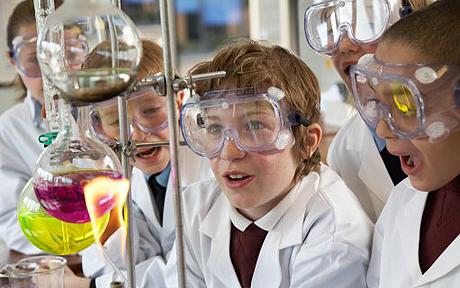
Science is Important
According to NationMaster, the U.S. ranked 14th in a list of scientific literacy, falling behind South Korea, Japan, Canada, the U.K., and France, among others. A country's quality of living and it's financial competitiveness in the global marketplace can be attributed, in part, to the quantity and quality of it's scientists. The quality of healthcare available in a country is dependent upon the quality of education of its practitioners, the innovations of its researchers, and the ability of manufacturers and engineers to understand scientific principles well enough to capitalize on the latest scientific information. The same is true for technology and other areas of science.
On a personal level, science is about a way of thinking, a way of looking at the world around you, and a way of solving problems. The more methods you give your children to think and solve problems, the better equipped they will be to handle anything they encounter in their journey through life, both as children and as adults. Knowledge is power, and by doing activities at home, you increase your child's chances for success at school and in life later on, which instills them with self-confidence and self-esteem - a priceless gift.
Activity #1: Which Laundry Detergent Works Best?
This activity investigates the effectiveness of different laundry detergents in breaking down proteins.
Preparation
Instead of spending money buying different kinds of laundry detergent, ask your friends and neighbors to use a few teaspoons of their laundry detergents. First, discuss what proteins are and how proteins are found in sweat, blood, grass, food, and other things that soil clothes. Also discuss how, in the U.S., about 50% of liquid detergents, 25% of powder detergents, and almost all powdered bleach additives now contain enzymes to help break down proteins. Discuss enzymes. Then test each of the different detergents to see which one breaks down proteins the best, using the protein in gelatin.
Materials
- 6 test tubes (or more if you intend to test more detergents) A set of 6 plastic screw-cap test tubs with stand is available from sciencekit.com for $11.95).
- Gelatin (available at grocery stores) We used Knox unflavored gelatin
- Marker to mark test tubes
- a couple teaspoons of different laundry detergents
- distilled water for control
Procedure
- Prepare gelatin and fill each test tube 3/4 full. We will test how the detergents break down the proteins in the gelatin. Let the tubes sit and gel.
- With permanent marker, mark where the gelatin ends to know where the starting level is.
- For each detergent to be tested, take 1-2 teaspoons and add to a test tube. Use the same amount for each detergent. For example, use 2 teaspoons of each detergent.
- One test tube will be the control, so put 2 teaspoons (or whatever amount you’re using) of distilled water in one test tube.
- Be sure to label each test tube. Example, one test tube will be labeled “Control”, one will be “tide”, one will be “Cheer”, one will be “All”, etc. Label with the detergents you are using.
- Put the caps on the test tubes and set aside. Each day for 4-5 days, look at the test tubes and look for changes in the gelatin. Record your results. You can choose how long you will use for the experiment. We did 5 days. You can do 3, 4, or as many days as you want.
- At the end of your time limit, mark the test tubes where the gelatin level currently is for each tube. Measure the difference between the starting gelatin line and the current gelatin line.
- Discuss. Which detergent broke down the most gelatin? Which one broke down the least amount? The ingredient in the detergents that break down the proteins are enzymes. Lookin the dictionary and define what an enzyme is. Look at the ingredients listed on the detergent bottles/boxes. Which one is probably the enzyme? *Enzyme names end with -ase). For example, the enzyme lactase breaks down the protein lactose (in milk). Suggest the name of an enzyme that breaks down gelatin.
Activity #2: What Happens to Our Garbage?
Here’s an activity I did with my daughter when she was 5 years old. People throw lots of things away but have no real idea of where it goes or what happens to it after they take it to the curb. This activity investigates that topic.
Overview
There are two parts to this activity, and it requires an adult’s help. The first thing I did was to look in the phone book and call our local landfill. I told the people at the landfill that I wanted my kids to learn what happened to garbage after it gets thrown away, and I asked if they would give my kids a tour of their landfill. They were happy to help. In fact, when I took my kids to tour the landfill, the guy told me, “I’ve worked here for 18 years, and this is the first time someone has called and wanted to come and see what we do here!” They were very friendly. They took my three kids around, showed them where they bury the garbage, told them about the methane gas that escapes and how they deal with it, and showed them models of how they layer the garbage underground. They even gave the kids some free gifts. The kids loved it, and still remember that trip to this day.
The second part of the activity is an experiment:
Materials Needed
- Three types of garbage (at least 3 of each): paper products (e.g., paper, cardboard egg cartons, etc); plastic garbage (e.g., those plastic grocery bags you get at the grocery store, etc); organic garbage (eggshells, banana peels, etc).
- shovel
- nail and hammer
- bucket of water
Objective:
The object of this experiment is to show how different types of garbage break down and IF they break down. In this experiment, we put three different types of garbage in three places - buried in earth, exposed to the sun and air, and immersed in water. After several weeks, the garbage is examined to see how much, if any, broke down, and which method helped it to break down.
Procedure:
- Make three piles of garbage. It’s best to havethree of the same things. For example, 3 plastic grocery bags for plastic, 3 cardboard egg cartons for paper, and 3 banana peels for organic. Put one of each type of garbage in each pile. So, you can have three of the same piles: Each pile will have a plastic grocery bag, a banana peel, and a cardboard egg carton.
- One pile will be used to investigate how garbage gets broken down in the earth. Take the shovel and dig a hole somewhere outside and bury one pile (a piece of paper or cardboard, a piece of plastic, and a piece of organic matter). Cover it up with dirt, and be sure to mark the spot so you can find it again.
- One pile is used to investigate how garbage breaks down when exposed to sun and air. Take your three pieces of garbage from the next pile and hang it on a tree by nailing it to the trunk. Alternatively, you can just leave it outside in the sun if you have an area where it won’t be disturbed or blown away by the wind.
- The last pile should be submersed in the bucket of water to see how water alone breaks down garbage. This can be put inside or outside, but it should be kept in the dark or shade to eliminate the effects of the sun.
- You can choose your own time limit. We checked the garbage once a week for 6 weeks to examine if and how much the garbage broke down in the three different venues. At the end of your time period, be sure to remove all the garbage and throw it away.
- Then it’s time to discuss what you learned with your kids. Discuss which garbage broke down and which did not. Why do you think that was? Thinking about all the things people buy and the packaging they come in, what do you think that means for our environment? How could we eliminate the problems presented by so much of the trash we generate in America daily?
- Here are some pertinent facts to review with your kids and some websites for more information:
Plastic Garbage bags
Newspapers take two to five months to biodegrade in a compost heap; banana peels take several days, but plastic grocery bags show no decomposition because they are made of polyethylene, a man-made polymer that microorganisms don’t recognize as food. Some scientists estimate that it takes 500 years for a plastic grocery bag to break down, while others say it’s closer to 1,000 years old. Since these bags were only invented about 50 years ago, we don’t have first-hand data to determine their decomposition rate, so scientists rely on tests using respirometry *you can look that up online if you want to explore that).
Paper and Organic Matter
Sometimes, even banana peels don’t decompose once they reach the landfill. For sanitary reasons, modern landfills are lined on the bottom with clay and plastic to keep waste from escaping into the soil and are covered daily with a layer of earth to reduce odor. The landfill, then, acts like a trash tomb—the garbage within receives little air, water, or sunlight. This means that even readily degradable waste objects, including paper and food scraps, are more likely to mummify than decompose.
You can further this lesson by watching an online video about recycling or landfills. You can tell the kids about the ocean currents and how there is now an area in the Pacific Ocean of plastic garbage that’s as large as a continent. ( http://www.mindfully.org/Plastic/Ocean/Trashing-Oceans-Plastic4nov02.htm).
A Tour of a Landfill
Activity #3: Bacteria in Our Home
This activity helps children understand bacteria and investigate bacteria in their own house. It requires materials that you may not have, so I listed some places you can get them and how much they cost.
In this activity, you will collect samples from different areas of your house using cotton swabs, transfer them to agar in a Petri dish, incubate, and investigate the bacterial growth. We swabbed the kitchen counter, the TV remote control, the front doorknob, the railing on the stairs, the living room table, the kitchen floor, and a chin-up bar we had installed in one of our doorways that the kids used all the time to play on. We had a microscope at home, so we also identified which kind of bacteria was in each area (just the type of bacteria based on shape).
Preparation
Teach your children about bacteria. Use books, online videos, etc. to define what bacteria are, how some bacteria are beneficial and some are harmful, discuss some of the diseases that are caused by bacteria, discuss how small they are, etc. Discuss the three shapes of bacteria - cocci (round), spirlla (spiral), and bacillus (rod). If they don’t know what a microscope is, discuss that as well.
Supplies
- Petri dishes (You can get a package of 20 100-mm dishes at sciencekit for $7.15)
- Nutrient Agar (sciencekit sells already-prepared petri plates (10) for $15.75, I used a 350-mL bottle of prepared agar. OnlineScienceMall store at ebay sells that for $14.95)
- Swabs. You could just use Q-tips, but they’re not really big enough to collect a big enough sample. I recommend the regular swabs. Sciencekit sells a pkg of 72 for $2.25, but you won’t need that many!
- OnlineScienceMall has the best deal - you can get 10 pre-poured petri dishes with 10 sterile swabs for $17.50!
- Scotch Tape. Once the bacteria is collected and transferred to the agar, be sure to seal the petri dishes with tape so they can’t be opened. Bacteria reproduce rapidly, and you will quickly have very high concentrations. Keep the dishes sealed to avoid letting the bacteria come in contact with kids or pets. This is important!
- Permanent Marker to label the Petri dishes.
- Warm area for incubating the bacteria. Around 80 degrees is ideal. I had an electric heater, so I turned that on and put the plates near it. But room temperature should do fine.
- Distilled water to moisten swabs for collection.
- Optional: microscope to look at the bacteria (through the Petri dish - don’t open the incubated dishes!)
Objective:
To identify which areas of the home have the highest concentrations of bacteria.
Procedure:
- Get petri dishes ready by pouring the agar in and letting it gel, or just use pre-poured, ready-to-use petri dishes.
- Figure out which areas you will test and label the tops of the petri dishes with a Sharpie. For example “computer keyboard” or “kitchen counter”.
- Take the sterile swabs, being careful not to touch the tips with your fingers, and moisten with distilled water. Swab various areas of your house that you want to test (one at a time). Rub the swab back and forth and roll it to cover all sides of the tip.
- Take the swab and swab the agar plate. It’s best to use a zig-zag pattern, running it over the whole area. swab using a different technique, but zig-zag is fine for this experiment.
- Put the lid on the Petri plate, seal around the sides with scotch tape, and make sure it’s labeled.
- Repeat steps 2 - 5 until all plates are done.
- Set the plates in a warm area to incubate. Make sure they cannot be accessed by pets, very small children, etc. Don’t set them on a heater - the plastic plates may melt.
- Incubate for 24-48 hours (we did 48 hours), and check them about every 12 hours.
- After 48 hours, examine and discuss. Which areas of the house had the most bacteria? Note the shape, color, and amount of bacteria. What else have you discovered?
- You may want to take pictures for your memory book….
- Be sure to throw the petri dishes away.
Bacteria
Supplies at Amazon
Activity #4: The Central Nervous System
Activity #4: The Nervous System
This activity involves dissection. My kids were 4, 6, and 8 years old when we did this. The first time we did a dissection, two of my kids were "grossed out" upon seeing the organ for the first time, but I took time to sit and explain why dissection is important in science (how else would doctors know how to fix a heart if they couldn't dissect an organism to practice?). We discussed how new experiences appear gross or scary, but once you do it or experience it, it becomes familiar and no longer a big deal. We talked about meat that we buy in grocery stores, and how it is just the parts of animals that have died - similar to what we do here with dissection, only for a different purpose. We eat the meat, we use it here to learn. After they started the activity, they got over their trepidation and thought it was really "neat".
Purpose
The purpose of this exercise is to teach kids about the nervous system (i.e., the central nervous system) and make it real for them.
Preparation
- Discuss the nervous system. There are 2 compenents: the central nervous system (i.e., the brain and spinal cord) and the peripheral nervous system (branching nerves to organs, limbs, etc). Discuss how the central nervous system is set up, how the brain is organized into different lobes and regions, how each region controls a different function or area of the body, and how the brain connects with the spinal cord to carry information to the rest of the body. Define a nerve, talk about nerve cells and how they transmit the electrical information of the nervous system. Be as brief or as detailed as you deem appropriate for your children, taking into consideration their age, their prior knowledge, their level of curiosity, and the amount of time you want to invest. You can use:
- a chart (for example, The Nervous System, available at amazon.com)
- a DVD (such asJust The Facts: The Human Body - Nervous System)
- books
- various online sources (see the youtube video below as an example)
Materials
This activity requires materials that you have to purchase, but everything except the organ can be set aside and re-used later on. I purchased many of my supplies at sciencekit.com because they were high quality and affordable. Check ebay, amazon.com or other science supply stores online to see if you can find what you need even cheaper.
- Book: The Sheep Brain: A Basic Guide by Richard K Cooley and C. H. Vanderwolf (2004)
- Dissecting Kit. Amazon.com sells one for $16.49. Make sure your children only have access to this kit in the presence of a responsible parent!
- Dissecting tray. Amazon.com sells a 14" wax-lined tray for $13.00
- Sheep Brain. ScienceShopUSA at amazon.com sells them for $11.95. Carolina sells them for $9.50.
- Latex gloves for you and your kids to wear when dissecting.
- Optional: If you have never dissected anything before and feel reluctant about the whole process, check out How to Dissect by William Berman ($14.85 at amazon.com)
Procedure
Follow the instructions and guidelines set forth in The Sheep Brain: A Basic Guide by Cooley and Vanderwolf (see materials list). They will guide you through the process.
Notes
You can do other dissections, using the same basic steps above. We have dissected sharks, starfish, and frogs.
Activity #5: Jeopardy
This activity can encompass sujects other than science, if you want to add more subject matter. Or you can do it using various topics within science, such as "Chemistry", "Biology", "Astronomy", etc. It takes some time and preparation on the part of the parent, but it’s well worth the effort! It is a home, kid-friendly version of the TV game show, Jeopardy.
This game works better with more kids, so when I did it, I talked to other parents in the apartment community where I lived, told them that we were having a Jeopardy game at my house every Friday, and asked their children to join us. Since the game is based on topics the kids are learning at school or at home, ask the parents to share what their kids are currently studying in school (last week’s homework, etc) or at home. Note which grade they’re in to make age-appropriate questions.
Materials
Jeopardy Board with value and question cards (see “Setup” below)
Paper and Pencils for score keeping and for writing Final Jeopardy answers
Buzzers (I used pans and spoons)
prizes
Setup
For this activity, you will have to make a jeopardy board for repeated use. Poster board will fall apart too easily. Cardboard or foamboard is better. If you’re able, it’s better to take a big board and make it out of wood. But if you’re not the carpenter type, cardboard will work fine.
I used foamboard. You may have to connect a few pieces together to get it big enough. Mine was about 4 feet by 5 feet, for easy viewing, even from afar. Make 25 square holes - 5 columns across and 5 rows down. Each column will be a category and each square in the columns will be for points - 100, 200, 300, 400 and 500, for example.
You will need to make “holders” for each square to hold the cards. I just used more cardboard to make card holders in the back of each square hole.
You can be creative and make your board out of anything. You could use a magnetic board and make your columns and rows using magnetic (erasable) squares that you write the amounts on.
Preparation
Preparation takes a bit of time on the part of the parent, but I liked preparing for our weekly Jeopardy game. To prepare, know what grade levels of each child that will be participating. You also must find out what they’ve already studied, preferably something they’ve studied recently. Also, you have to choose your categories, such as “Science”, “Math”, Music”, “Famous People”, “History”, “Vocabulary”, “Art”, etc.
Make value cards to put in the square holes in the board. You can use points or dollars. For regular Jeopardy, that’s 5 cards that say “$100″, 5 that say “$200″, and so on. For double jeopardy, you will need 5 $200 cards, 5 $400 cards, etc.
Then, make your questions for each category. If you do a round of regular jeopardy and a round of double jeopardy, as I did, you will need 10 questions for each category. I always tried to make questions to review what they learned in school the past week. Write the questions on a card, and put the question cards behind the value cards. We had neighborhood kids from kindergarten through grade 7 participating in our game, so you need to write questions for each grade level that’s participating. You can put older kids in with younger kids and play all at once, but that can be difficult on question difficulty, so I divided the kids into grade levels and played separate games for K-2, 3-5, and grades 6-7. It’s a lot easier that way.
Order the questions from easiest to hardest and put them behind the value cards, making the easier questions worth less and the more difficult ones worth more.
Get something for each child to “buzz in” with. I gave each child a pan and a spoon. When they wanted to buzz in, they just hit the pan with the spoon.
I wanted to reward the kids for participating, so when I had the money, I stocked up on toys, books, and gadgets from the $1 store. Other times, I baked cookies or treats for prizes. I wanted every child to get something in the end, so I had something for each participant. The winner got first pick, then the second-place winner, and so on.
Now, it’s time to play!
Playing the Game
Play the game just like Jeopardy on TV. To choose who goes first, you could pick a number and see who gets the closest, or draw straws or any number of methods.
The first person to play picks a category and an amount. The parent takes the question card from behind the value card and reads the question. Participants “buzz in” and phrase the answer in the form of a question, as in the TV show. Whoever answers the question correctly gets to keep the value card, to be added up later. It’s also a good idea if the parent writes down each child’s score as the game goes along, in case the cards get shuffled around in the excitement, preventing an accurate count at the end.
Whoever answers the question right gets to pick the next question. For example, “I’ll take Music for $300″. Everyone has the chance to buzz in and answer any question. Remind them that they have to buzz in first!
Once all questions are done in regular jeopardy, reset the board using the double Jeopardy value cards and question cards. Play again.
For final jeopardy, have the kids vote on a category and provide a final jeopardy question. Have them write down their answer. They must decide and write down how much they want to wager on their final jeopardy answer.
Winning
The person with the most points or dollars at the end wins. That person gets first pick from the prize bag. Then it goes to the second place winner, and so on. Make sure every child gets something.
For More Science Activity Ideas
- Kids Science Experiments
kids science experiments - Loads of fun, simple, safe and easy science experiments and science projects for children of all ages. Experiments are carried out by using everyday materials and recycled materials found around the home. - Activities for Kids
Activities to do with your kids. New activities added daily.
Expand Your Activities by Participating in a Competition
An exciting way for kids to explore and increase their scientific skills is to enter a competition. Check out these competitions and let your child's imagination run wild. You'll have fun every step of the way, so winning isn't the only way to enjoy entering these competitions.
Toshiba's Exploravision
- Grades: K-12
- What: ExploraVision encourages K-12 students of all interest, skill and ability levels to create and explore a vision of future technology by combining their imaginations with the tools of science. All inventions and innovations result from creative thinking and problem solving. That's what ExploraVision is all about.
- How to Enter : Get the application packet from their website at www.exploravision.org.
- Deadline: The entry deadline is in Jan., but you can get started on your project for next year.
- Prizes:
- First Prize (4 teams): U.S. EE Savings Bond worth $10,000* at maturity for each student.
- Second Prize (4 teams): U.S. EE Savings Bond worth $5,000* at maturity for each student.
- Regional Prize (24 teams): A Toshiba notebook computer for each regional winning school, and a special gift for each student, teacher and mentor.
- Honorable Mention Recognition
Kids' Science Challenge
- Grades: 3-6
- What: A nationwide, annual competition for third through sixth graders to submit experiments and problems for REAL scientists and engineers to solve.
- How to Enter: Download the registration form at http://kidsciencechallenge.com/html/register.php
- Deadline: January.
- Prizes: There are four sets of prizes, one for each category: Flavor Science, SETI, Skateboard Engineering, and Water Ecology. There are grand and runner-up prizes in every category. Free activity kit for first 1000 entries! See prize list at http://kidsciencechallenge.com/html/prizes.php
eCybermission
- Grades: 6-9
- What: eCYBERMISSION is a web-based science, math and technology competition for 6th, 7th, 8th and 9th grade teams. Your team will propose a solution to a real problem in your community and compete for regional and national awards. eCYBERMISSION challenges students to explore how science, math and technology work in their world.
- How to Enter: Register at their website: homepage is at www.ecybermission.com
- Deadline: The registration period for this year is August 1 December 19.
- Prizes: For entering, you get a T-shirt and commendation. Prizes for regional winners: $3000 saving bonds, tickets to national judging event. Prizes for national winners: $5000 and $3500 savings bonds.
Christopher Columbus Awards
- Grades: 6-8
- What: A national, community-based science and technology program for middle school students. The program challenges the students to work in teams of three to four, with an adult coach, to identify a problem in their community and apply the scientific method to create an innovative solution to that problem.
- How to Enter: Go to their website at http://www.christophercolumbusawards.com and click on "How to Enter"
- Deadline: February 9
- Prizes: Eight finalist teams and their coaches will receive an all-expense-paid trip to Walt Disney World® to attend National Championship Week and compete for valuable U.S. Savings Bonds and the $25,000 Columbus Foundation Community Grant, plus a $200 development grant to further refine their idea.
TechXplore
- Grades: 6-12
- What: 12-week online technology competition for middle school and high school students. Teams of 2-6 students are matched with a mentor from the fields of science or technology. The team decides on a common everyday problem to tackle, and then comes up with a new solution to that problem; a solution that either uses existing technology in a new way or uses a new technology. The team's final project is presented either in the form of a PowerPoint presentation or a website that describes the problem, the research process and the solution.
- How to Enter: See their website at http://www.techxplore.org/techxplore/default.asp. Project leaders will need to sign up first. After signing up as a project leader you will be given information about the competition and coaching instructions. See facilitator's guide here. (pdf format)
- Deadline: Open
- Prizes: $1000 for your school
There are many other competitions, of course. Do your own online search to find more opportunities. There are many more for older students and high school students, such as the Intel Science Talent Search and the Siemens Competition in Math, Science & Technology. I just listed competitions here that younger children could enter.




